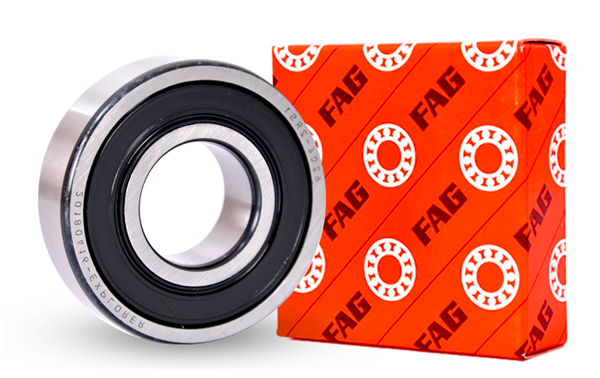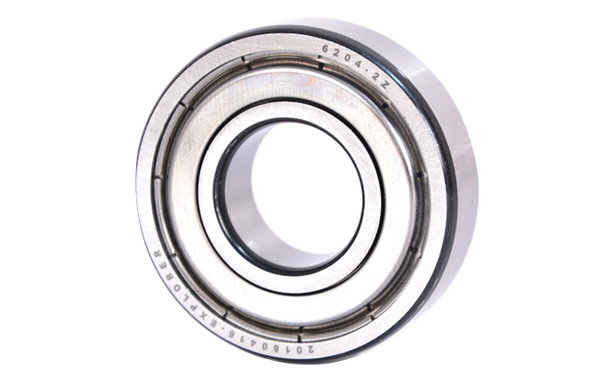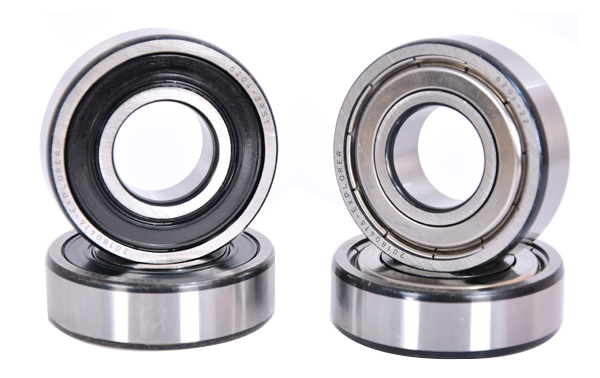FAG bearing damage has a very significant impact on the accuracy and life of the bearing. Therefore, while using FAG bearings, it is necessary to understand the common causes of damage to FAG bearings and take timely precautionary measures. The following are general damages and causes of FAG bearings.
1.Bearing noise
FAG bearings are allowed to have a slight running noise during operation, but if the sound is too loud or there is abnormal noise or impact, it indicates that the bearing is faulty.
The causes of noise produced by FAG bearings are more complicated. The first is the wear of the parallel surfaces of the bearing's inner and outer rings. Due to this wear, the cooperation relationship between the bearing and the housing is destroyed. They were causing the axis to deviate. Abnormal noise is generated when the shaft moves at high speed.
The second is that when the bearing is fatigued, the surface metal peels off, which will also increase the radial clearance of the FAG bearing and produce abnormal noise.
Also, FAG bearings are not sufficiently lubricated, dry friction is formed, and FAG bearings are broken.
After the FAG bearing is worn and loose, the cage is free and damaged, and abnormal noise will also be generated.
2.Strip metal on the raceway surface
FAG bearing rolling elements and the inner and outer ring raceway surfaces are subject to periodic pulsating loads, resulting in cyclically varying contact stresses. When the number of stress cycles reaches an absolute value, fatigue spalling will occur on the working surface of the FAG bearing rolling body or the inner and outer ring raceway. If the bearing is overloaded, this fatigue will be exacerbated. Also, FAG bearings are not installed correctly, and the shaft is bent, which may also cause the peeling of the raceway. FAG bearing raceway's fatigue spalling will reduce the running accuracy of the shaft and cause the machine to vibrate and noise.
3. The bearing temperature is too high
During the operation of the equipment, the part is allowed to have a specific temperature. When touching the housing of the mechanism with hands, it should be reasonable not to feel hot; otherwise, it indicates that the bearing temperature is too high.
The reasons for the high temperature of FAG bearings are: the quality of the lubricating oil does not meet the requirements or deteriorates, the viscosity of the lubricating oil is too high. The assembly of the mechanism is too tight. The construction of the bearing is too close. The bearing race rotates on the shaft or inside the housing. The cage or FAG bearing rolling element is broken.

4.Bearing burns
Burned FAG bearings have tempered colors on their raceways and rolling elements. The causes of injuries are generally insufficient lubrication, the quality of the lubricating oil does not meet the requirements or deterioration, and the bearing assembly is too tight.
5. Plastic deformation
The uneven pits on the contact surface between the raceway and the roller of the FAG bearing indicate that the bearing has plastic deformation.
The reason is that under the action of a large static or impact load on the bearing, the local stress on the working surface exceeds the yield limit of the material. This situation generally occurs on low-speed rotating bearings.
6. The metal of the cage adheres to the rolling body
The reason may be that the FAG bearing rolling body is stuck in the cage, and foreign objects fall into the seat ring. It may also be a lack of lubricant or an inappropriate lubricant grade.

7.Cracks in bearing races
The reasons may be that the bearing fits too tightly, the bearing's outer or inner ring is loose, the bearing's containing parts are deformed, and the surface on which the bearing is installed is poorly processed.
8. Rust and corrosion
Damage state: FAG bearing rust and corrosion include raceway wheels, pit-like rust on the surface of rolling elements, full rust, and corrosion.
Reason: the intrusion of water and corrosive substances. The lubricant is not suitable. Water droplets are attached due to the condensation of water vapor. Stop at high temperature and humidity. Massive rust prevention during transportation. The storage status is inappropriate. Not suitable for use.
9. Installation scars
Damage state: axial linear injuries on the raceway surface and rolling surface during installation and removal.
Reason: Impact load during installation and removal of the inner ring and outer ring at an oblique installation and removal.
If the spherical roller thrust bearing is not operating normally if the bearing is not functioning normally, it usually displays many symptoms, which can be roughly divided into seven categories. A: Bearing overheating; B: Noise; C: Vibration; D: Mechanical performance is not satisfactory; E: Bearing is loose on shaft F: Frequency of replacement is high; G: Shaft rotation is difficult. As the bearings are damaged to varying degrees, they are often the result of secondary damage. To effectively eliminate these bearing problems, you must first observe the application of these bearings, and then analyze the causes of this damage.

Hot Tags: